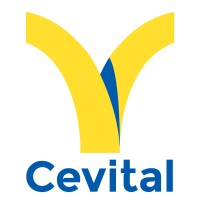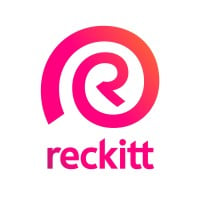Company Cyber Security Posture
NANA
NA Company Details
NA
NA
NA
NA
NA
NA
Scan still pending
NA
NA
Between 200 and 800
This score is AI-generated and less favored by cyber insurers, who prefer the TPRM score.
 NA Global Score
NA Global Score.png)

Company Scoring based on AI Models
| Model Name | Date | Description | Current Score Difference | Score |
|---|---|---|---|---|
| AVERAGE-Industry | 03-12-2025 | This score represents the average cybersecurity rating of companies already scanned within the same industry. It provides a benchmark to compare an individual company's security posture against its industry peers. | N/A | Between 200 and 800 |
Company Cyber Security News & History
| Entity | Type | Severity | Impact | Seen | Url ID | Details | View |
|---|
Company Subsidiaries

NA
Access Data Using Our API

Get company history
.png)
NA Cyber Security News
South Africa's Tiger Brands offers settlement to plaintiffs in listeriosis class action
Tiger Brands , South Africa's biggest food producer, on Monday offered to compensate listeriosis victims, marking a major step toward ...
Tiger Brands Ltd (FRA:UG5A) (Q2 2025) Earnings Call Highlights: Strategic Moves and Financial Gains
Tiger Brands Ltd (FRA:UG5A) reported a 2.6% growth in core business volumes, marking a turnaround from previous declines. The company has ...
Tiger Brands finally sells Langeberg and Ashton Foods canned fruit units
Tiger Brands finally sells Langeberg and Ashton Foods canned fruit units. The sale, which comes five years after Tiger Brands announced its ...
Onavo Co-Founder Roi Tiger Works on New Cybersecurity Startup
Onavo Co-Founder Roi Tiger Works on New Cybersecurity Startup. Natasha Mascarenhas headshot Amir Efrati headshot. By. Natasha ...
South Africa's Tiger Brands sells canned fruit business for a rand
South Africa's Tiger Brands will sell its canned fruit business, Langeberg and Ashton Foods, as a going concern for a symbolic one rand to a ...
Tiger Brands to sell maize, sorghum cereal lines under CEO Tjaart Kruger’s simplification strategy
Tiger Brands to sell maize, sorghum cereal lines under CEO Tjaart Kruger's simplification strategy. Kruger, who joined the South African ...
South Africa's Tiger Brands' half-year profit rises more than expected
South Africa's Tiger Brands posted better-than-expected half-year earnings on Wednesday, declaring a special dividend and also announcing ...
SA's Tiger Brands to sell Empresas Carozzi stake for $240 mln, focus at home
Tiger Brands , South Africa's biggest food producer, said on Tuesday it would sell its 24.4% stake in food producer Empresas Carozzi back to ...
South Africa's Tiger Brands to sell Baby Wellbeing business, excluding Purity
The Baby Wellbeing business was identified as no longer a "financial and strategic fit" after an extensive portfolio review, Group CEO Tjaart ...

NA Similar Companies

Cevital SPA
Fondé en 1998, le groupe Cevital oeuvre pour le rayonnement et le développement de l’économie algérienne en intervenant dans des domaines variés par le biais de ses quatre pôles : le pôle agro-industrie et distribution, le pôle automotive, immobilier et services, le pôle industrie, ainsi

Reckitt
Every day, in everything we do, our purpose is to protect, heal and nurture in the relentless pursuit of a cleaner, healthier world. And we have a fight on our hands. A fight to make access to the highest quality hygiene, wellness and nourishment a right and not a privilege. Each of our products is

Newell Brands
Newell Brands (NASDAQ: NWL) is a leading global consumer goods company with a strong portfolio of well-known brands, including Rubbermaid, Sharpie, Graco, Coleman, Rubbermaid Commercial Products, Yankee Candle, Paper Mate, FoodSaver, Dymo, EXPO, Elmer’s, Oster, NUK, Spontex and Campingaz. We are f

Arçelik Türkiye
Arçelik Türkiye olarak, "Dünyaya Saygılı Dünyada Saygın" misyonuyla yola çıkıyoruz ve teknoloji, insan kaynağı ve üretim gücümüzü sürdürülebilir bir gelecek için kullanıyoruz. 1955 yılında başlayan yolculuğumuz bugün, 22 marka, 46 üretim tesisi, 55.000 çalışan ve 58 ülkedeki 125 iştirak ile global

Vorwerk Group
For more than 140 years, Vorwerk has been an internationally active family-owned company focused on improving life everywhere we call home. Our superior products and services come with a human touch, from the way we develop and sell them, to the way they are used. Today, more than 100.000 people i

AB InBev
As a company, we dream big to create a future with more cheers. We are always looking to serve up new ways to meet life’s moments, move our industry forward and make a meaningful impact in the world. We are committed to building great brands that stand the test of time and to brewing the best beers

Frequently Asked Questions
Explore insights on cybersecurity incidents, risk posture, and Rankiteo's assessments.
NA CyberSecurity History Information
How many cyber incidents has NA faced?
Total Incidents: According to Rankiteo, NA has faced 0 incidents in the past.
What types of cybersecurity incidents have occurred at NA?
Incident Types: The types of cybersecurity incidents that have occurred include .
Additional Questions
What Do We Measure?
















Every week, Rankiteo analyzes billions of signals to give organizations a sharper, faster view of emerging risks. With deeper, more actionable intelligence at their fingertips, security teams can outpace threat actors, respond instantly to Zero-Day attacks, and dramatically shrink their risk exposure window.
These are some of the factors we use to calculate the overall score:
Identify exposed access points, detect misconfigured SSL certificates, and uncover vulnerabilities across the network infrastructure.
Gain visibility into the software components used within an organization to detect vulnerabilities, manage risk, and ensure supply chain security.
Monitor and manage all IT assets and their configurations to ensure accurate, real-time visibility across the company's technology environment.
Leverage real-time insights on active threats, malware campaigns, and emerging vulnerabilities to proactively defend against evolving cyberattacks.




